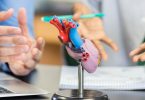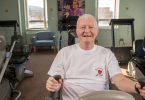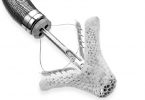After the attacks of September 11, 2001, in New York City, William Hendricks bought a 277-acre farm near Smithville, N.Y., in Chenango County to get away from the “hustle and bustle.” However, getting away from “everything” included nearby emergency medical services.
“On the first weekend last June, I went to the farm with my cousin, Peter, to work on our vineyard,” recalls Mr. Hendricks, a 63-year-old mortgage loan officer, a native and resident of Middletown, N.J. “We worked hard for several days — repairing the tractor, digging big holes. On Wednesday, June 6, I had the worst heartburn ever, and antacids only made it worse. Then it dawned on me I was having a heart attack.”
Mr. Hendricks was having a STEMI, an ST-elevation myocardial infarction, a particularly dangerous type of heart attack that requires immediate and aggressive treatment. Also, it was a 30-minute drive to the closest hospital, UHS Chenango Memorial Hospital in Norwich, but that’s where Mr. Hendricks and his cousin headed immediately.
Turnaround Time
Although he didn’t know it at the time, a new initiative at UHS Chenango Memorial would be of great benefit to Mr. Hendricks. Because of the hospital’s rural location and distance to a hospital that can fully treat STEMIs, UHS Chenango Memorial has streamlined its internal processes to reduce the time it takes to identify, stabilize and transfer STEMI patients. Over the past year, the team has worked to squeeze every minute out of the turnaround time for these patients.
Thanks to the people at UHS Chenango Memorial and the paramedics, I’m here today.
—William Hendricks
“Even with ambulance lights flashing and no traffic, it’s forty-five minutes to UHS Wilson Medical Center in Johnson City, where their advanced cardiac care center can perform the catheterization procedures required to treat STEMIs,” says Peter E. Gordon, MD, FACEP, medical director of the Emergency Center at UHS Chenango Memorial Hospital. “So, once a suspected STEMI patient hits our door, several diagnostics, treatments, and administrative activities need to happen quickly and simultaneously. In 2012, our emergency department staff and county emergency medical services started working to coordinate all these activities to reduce turnaround time for STEMI patients. Our results have been good, reducing times to under an hour.”
Once Mr. Hendricks and his cousin reached UHS Chenango Memorial, things happened fast. “Almost immediately they started treatment,” explains Mr. Hendricks. “They gave me drugs and worked seriously hard to get me stabilized.”
Dr. Gordon told Mr. Hendricks that a helicopter would transfer him. “But a few minutes later, the doctor told me the helicopter couldn’t make it, and I had to go by ambulance,” recalls Mr. Hendricks. “At that point, I turned to my cousin, told him I loved him, and told him where important papers for my wife were located. I thought that was it for me.”
Just in Time
Fortunately for Mr. Hendricks, the efforts to reduce turnaround times paid off. However, the efforts are ongoing. “We know we can get our turnaround times down further, and every minute we shave off saves more heart muscle in our patients,” explains Dr. Gordon.
IS IT A HEART ATTACK
You may think you are familiar with the symptoms of a heart attack, but did you know that women may have different symptoms from men? When should you call 911? When is it okay to drive?
Well, the answer to the last question is “never,” especially if you are thinking of driving yourself. If you are in an area covered by 911 service, calling 911 is the fastest way to get immediate medical care. Paramedics can quickly determine if you’re having a heart attack, start treatments immediately and call ahead to the hospital. They can even perform preliminary testing and transmit the results to the ED so treatment can begin as soon as you arrive at the hospital.
The classic symptoms of a heart attack for both genders include:
- Heavy pressure on the chest
- Sharp upper-body pain in the neck, back and jaw
- Severe shortness of breath
- Cold sweats
- Unfamiliar dizziness or lightheadedness
If you have any of these symptoms, call 911 immediately.
Once in the ambulance on the way to UHS Wilson, Mr. Hendricks continued the drugs under close monitoring from the paramedics. “One paramedic later told me he had to restart my heart, but I don’t remember that,” says Mr. Hendricks. “In fact, my next clear memory was waking up in the cath lab, with people putting stents in my heart. So thanks to the people at UHS Chenango Memorial and the paramedics, I’m here today.”
The stents were a temporary fix, since Mr. Hendricks was diagnosed with congestive heart failure. A few weeks later, he required quadruple bypass surgery at home in New Jersey. But these days, the news is all good.
“Before the heart attack, I worked 80 hours a week,” admits Mr. Hendricks. “I didn’t get out much to play golf, or do things I enjoyed. But now, it’s different. I leave earlier in the afternoon, and I worry less. I realize that it’s important to enjoy life, and spend time with my family, my wife, Cathy, our four kids and my friends. Right now for me, it’s a free ride.”
GET MORE
Read more about cardiac care at UHS in our 2013 Cardiac Special Issue.







